Most film shooters would know that over the past few years there’s been chatter about certain older camera sensors, in particular CCD sensors, that are widely reported to have “film-like” qualities. Partly out of FOMO, partly out of due diligence and partly because I can’t help myself, for the past couple of years I’ve gone down a film/digital rabbit hole trying to work out if there’s anything I need to learn from these sensors and yes, I’ve learned a fair bit and I’ve moved on. At least I think I have… for the moment, anyway.
So What do I Mean by “Film-Like”? The Short Answer:
The Short Answer for me would be this: A digital camera could be described as “film-like” if it produces out-of-camera jpegs that look like Minilab colour scans of 35mm film. OK – hold your horses a sec. I know this statement has holes all through it, but it’s a start. We’ll go through that in the Long Answer section.
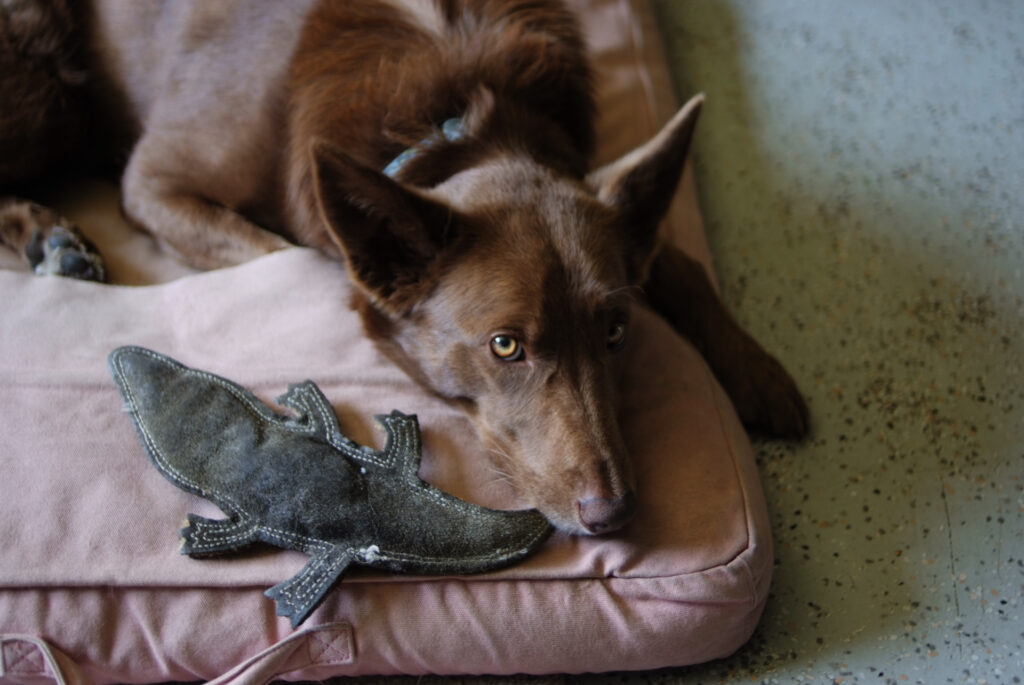
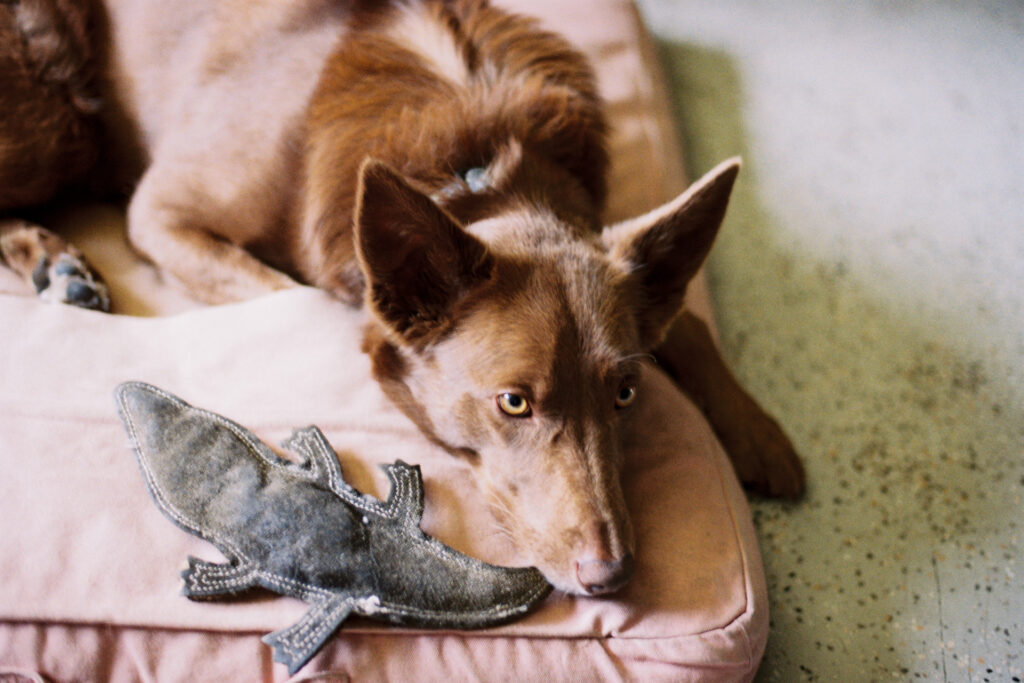
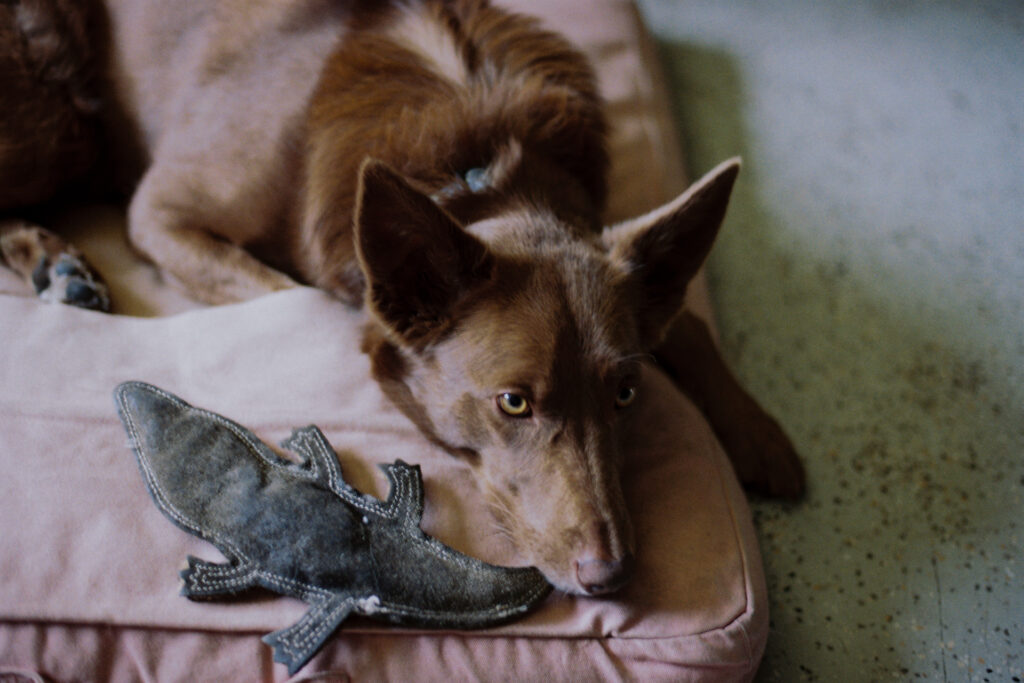
There are lots of clickbait YouTubers saying things like “Most Film-Like Camera Ever!” about all sorts of cameras. And this, essentially, is crap. But I’m as gullible as anyone… “What if it’s true? What if I could buy a $100 DigiCam that would give me results indistinguishable from Portra 400 in a Contax T3?” So I watch the videos, decide they’re crap, and move on. Until the next one… and the one after that.
But finally, I think I’ve made my peace with the whole notion of this, and to say whether a digital camera is successfully “film-like”, first we need to know what we mean. So I’m using the S5 Pro as an example here because it’s very clear in its intent and it’s pretty easy to judge how successful it was in delivering on that intent.
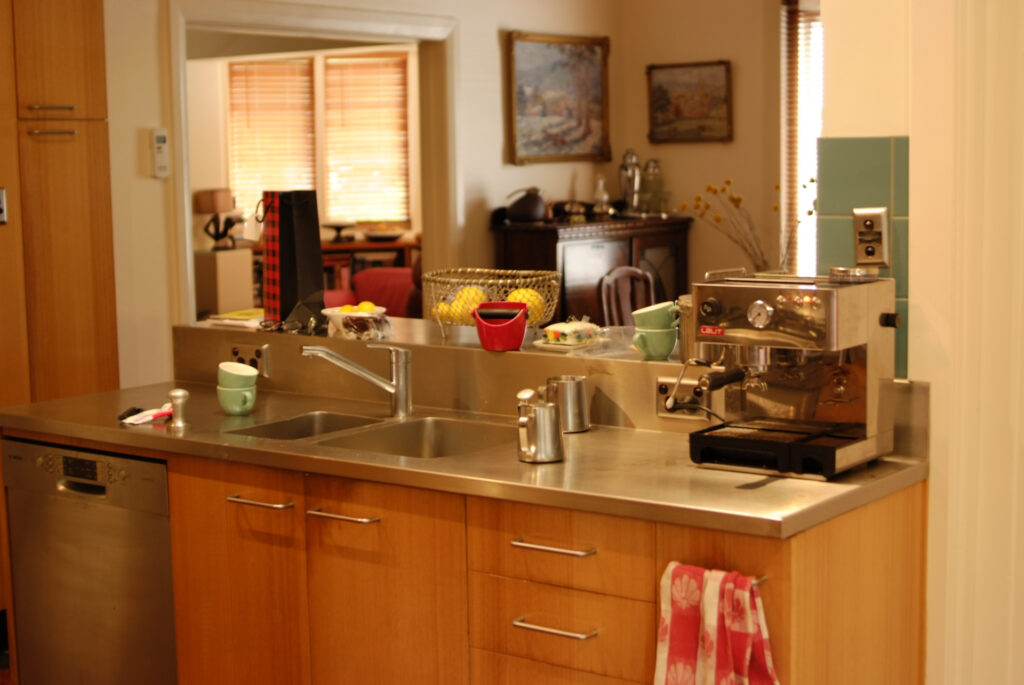
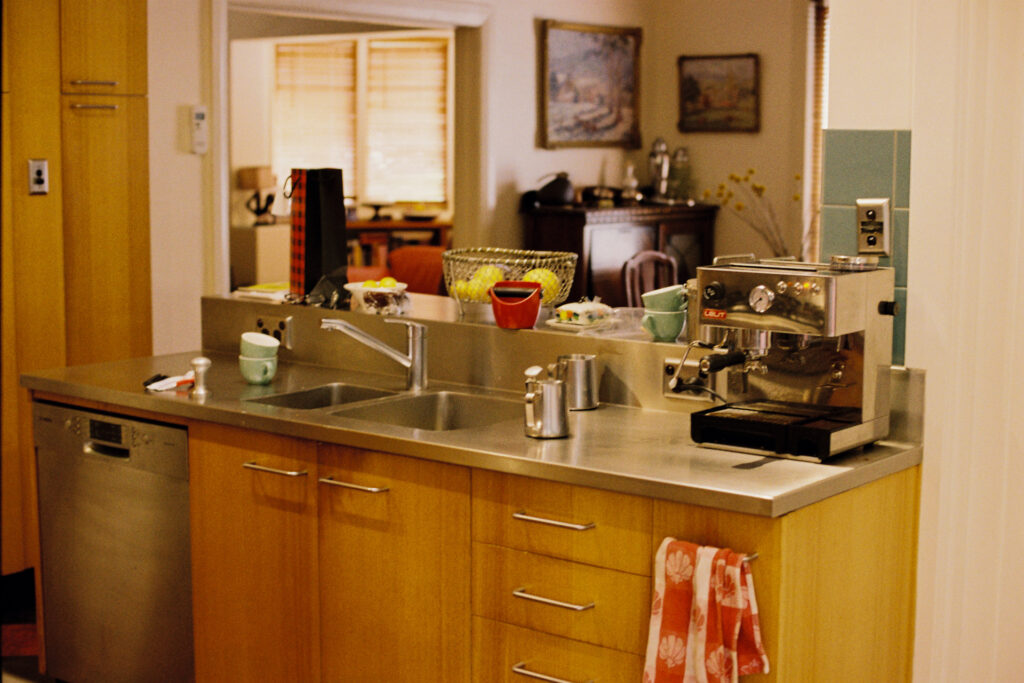
So here’s a slightly less short answer: I’d call the Fujifilm S5 Pro “film-like” because it attempted (and succeeded) to produce out-of-camera jpegs that looked like scans of 35mm Fujifilm colour negative film. It did this better than its competition at the time, and in a way that today still allows shooters to get jpegs that look like film scans.
Now Here’s the Long Answer:
So to back up for the deeper dive, I’ve been struggling with the film-like thing for the past few years; that is, ever since I started shooting film again in 2017. I grew up with film, shot it for commercial work and then gave it up completely when digital cameras became a viable solution for the sort of things I did.
When I started seriously getting into photography as a major part of my fine-art practice in 2020 I went back to film almost exclusively, and because I’d grown up on film I wanted to get similar looks and feels across both my film and digital shots.
Being like I am, I also started researching things on the net, watching YouTubes etc, and I’d get annoyed by bold pronouncements like “The [whatever camera you care to name] is the most film-like camera ever!” Or “The Leica M8 is just like shooting a continuous roll of Kodachrome!” (particularly when the person making such a claim had not shot a single frame of Kodachrome ever in their life)
So I got grumpier and grumpier, and tried more and more sensors and got essentially nowhere.
If you look at many of the pieces I’ve written here there’s a recurring theme of film and digital, and using them side by side. They’re a bit preachy perhaps, but I generally stand by them and they all helped me along the way.
Finally I went as far as shooting the same test scene with seven “classic” sensors (ones that people often refer to as “film-like”) that I just happened to own:
- Fuji Super CCD,
- Kodak CCD,
- Nikon D3/D700,
- Nikon D4/Df
- Fuji X-Trans 1, 2 and 3.
I made a YouTube video of this, and you can watch it if you like – it’s not indexed but it’s not private either. Be warned – it’s not good; it’s a rambling half hour of your life that you’ll never get back, but if all that doesn’t put you off, dig in. Here’s the Video (comes with boringness warning, but it does talk about and compares all seven cameras.)
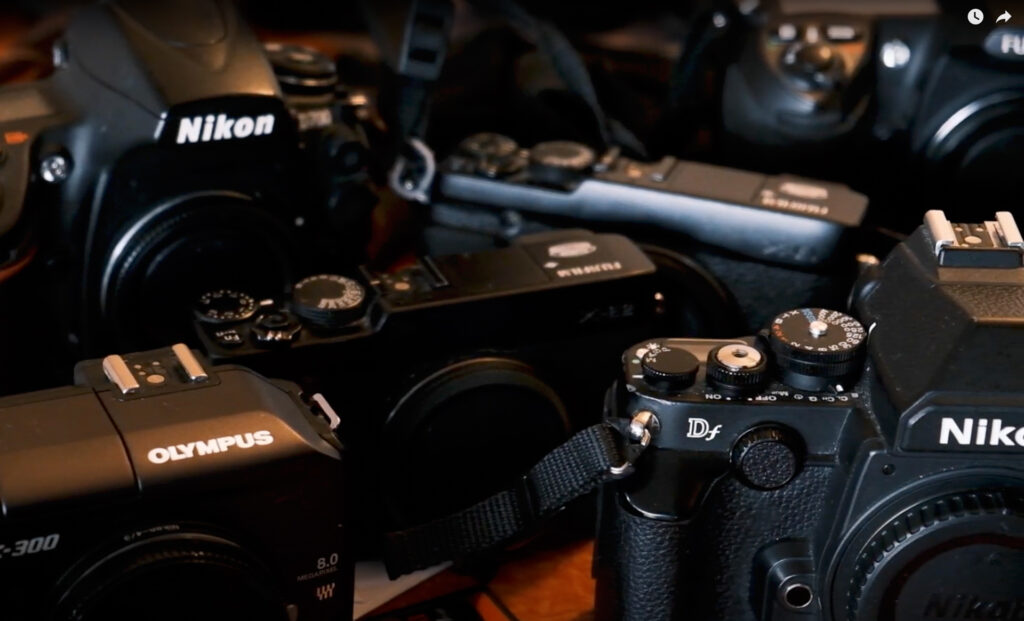
And here’s something that might be interesting if you really care… I put an out-of-camera JPEG of every film simulation of each of these cameras into a Google folder and if you like you can download and have a look. Link to Google Drive . There’s a folder for each camera and the JPEG types are visible as comments/description in the image. (so you’ll need something to read the EXIF.) You may want to play with the exposures, because I set that manually with the cameras on the same ISO setting. In this way we can see which sensors are more or less sensitive than their nominated. ISO would indicate. I thought this would be more useful than having all the exposures balanced initially. Oh, and it’s worth mentioning that they are all shot through the same lens because I could adapt that to each camera. It’s the Nikon 35mm to 70mm f2 .8 AFD. All that information is in the video, anyway.
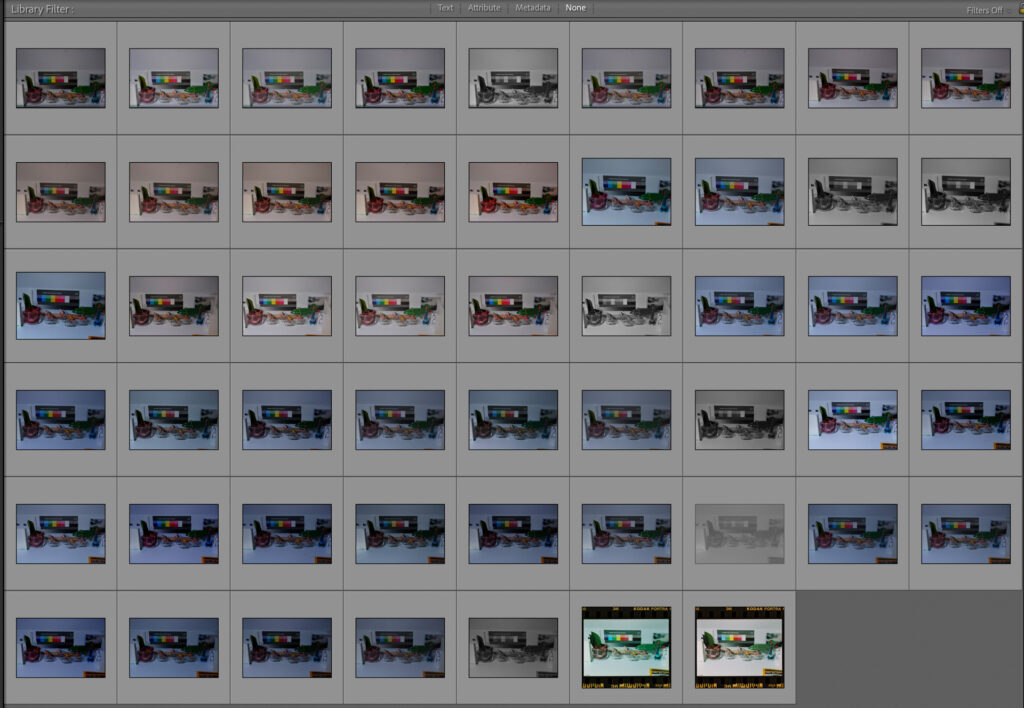
So for example if you want to see if the X-Trans 1 one really has nicer JPEGs than the X-Trans 2, or if you want to use the Kodak CCD images from the Olympus E-300 to make your own preset then jump in and fill your boots! Of course all the cameras have many other settings apart from simply the different simulations, but generally I’ve just left everything else on their defauts.
And finally – FINALLY – I got to a point where I feel I can say something useful, and maybe put this all to rest in my own mind.
And yes, I would describe the Fuji S5 Pro with its Super CCD sensor as “film-like”. Please note that I’m not saying the others are not, or that you can’t get an even more “film like” experience from the other cameras. In fact – for shooting a wedding I’d choose the D4 or D3 sensor over the Fuji Super CCD in a heartbeat and really I see no reason now to shoot the S5 Pro ever again – so indeed I sold it – but I’m picking the S5 Pro as my example here because it’s the clearest and easiest example to use to explain what I mean.
So How Does This Work?
Before we zoom back to 2006 we need a quick look at where we are today. Today things would go like this: I’d be shooting raw, throwing on a Lightroom preset that I had developed myself to my own taste, and then printing digitally if at all. If I was really keen, I might get a Calibrite checker and take a shot of that under the lighting conditions of the shoot… And then calibrate my files according to that before proceeding. I won’t go into that here, but it’s pretty snazzy… You can get Calibrite to make its own little preset for you to correct for your camera and the lighting conditions so that, for example, that green dress you are shooting for the catalogue comes out the right colour in the files and you don’t get into trouble with your Etsy shop. Anyway, Google that if you feel like it.
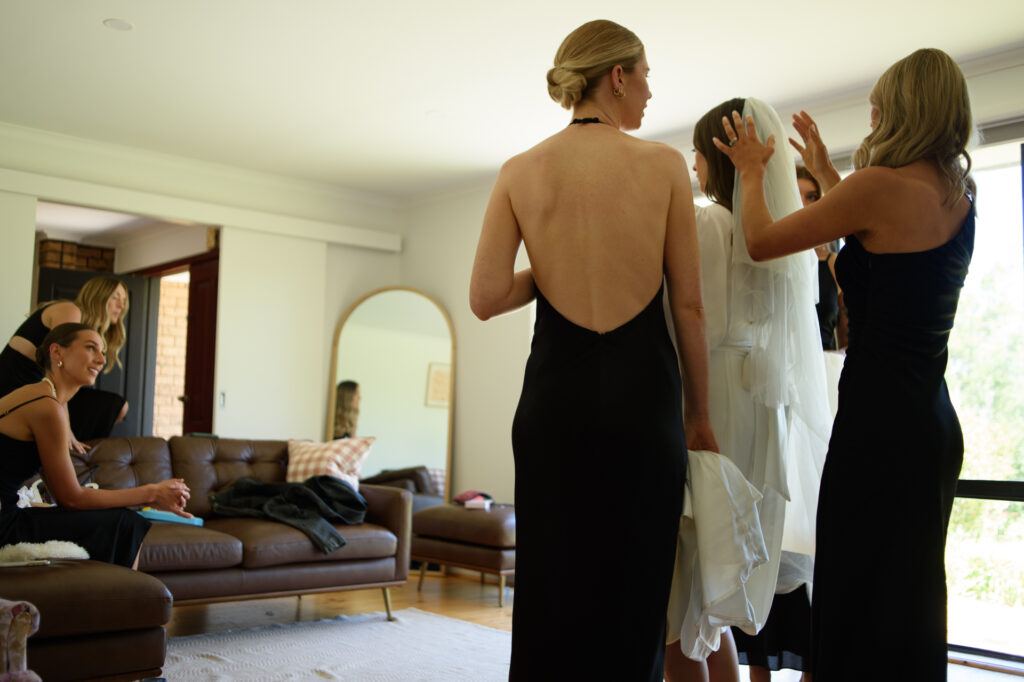
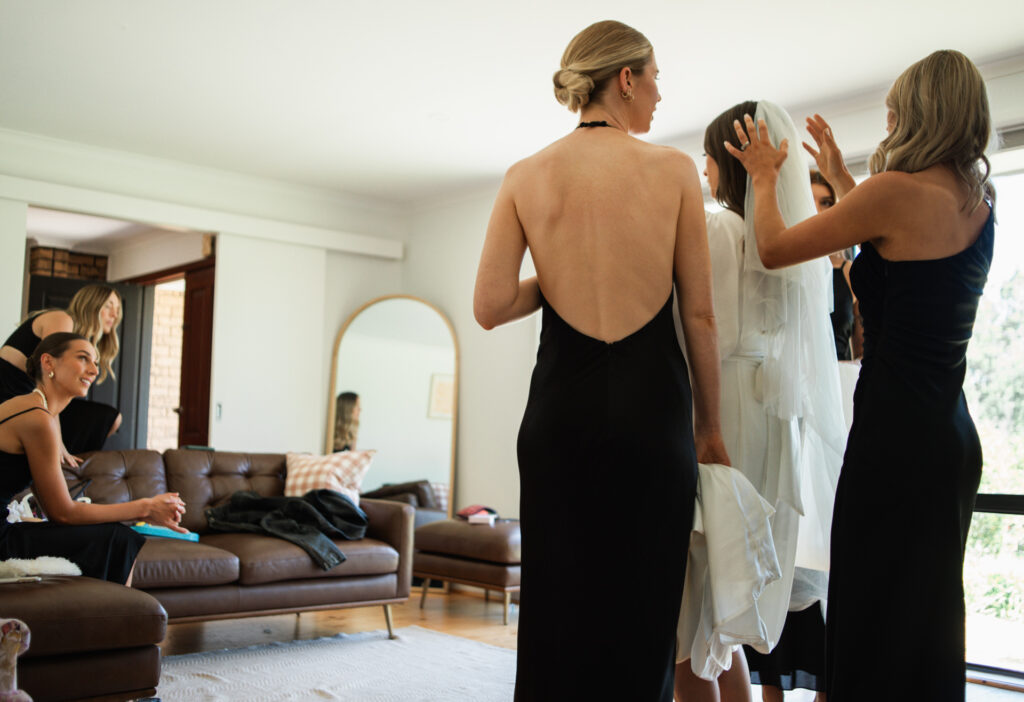
In fact here is a shot from a wedding I shot recently on my Df (D4 sensor). There is no way I’d shoot the S5 Pro over these. I shot daylight white balance, ISO 800 or lower, standard profile RAW, and used a preset I made myself. I guess you could say my preset is a bit filmlike, but really it’s just made to my taste. My taste is based somewhat on a film aesthetic and you could say it’s a bit Fuji 400H but really it’s just like this because I like it.
OK; that’s today. Now, let’s go back to 2006 when the Fuji S5 Pro was released. Computers were slow. Storage was expensive – raw processing was less common. For something like a wedding, you’d want jpegs out of camera that would PRINT NICELY. Remember – the first iPhone was announced in 2007. Prints… Still… Mattered.
But more than that; WET prints still mattered. C Types mattered – prints where colour paper was exposed to light and run through chemicals. I’m still occasionally having C Types made today, but I don’t expect this to last.
Both Fuji and Kodak had been using a hybrid digital/wet process since the 1970s/1980s. LEDs for Kodak, Lasers for Fuji but both involved scanning film and then exposing the paper with light created from a digital file and running through chemicals. Remember Minilabs and One Hour Photos in the shopping centres?
Film was being scanned to make digital files that were then used for wet prints. And these scanners were big and they were expensive.
Then, as we know, digital sensors started to become available to go in cameras.
- 1999: Nikon D1 2.7MP APSC and $US 5000.
- 2002: Nikon D100 6MP APSC and $US 2000
- 2005: Nikon D200 10MP APSC and $US 1700
- 2006 Fuji S5Pro 12MP (well, 6MP really) APSC $US 1900. Note – the S5Pro is a Nikon D200 body with a Fuji sensor inside
Now – here’s a quote from the intro of the DPReview review of the S5Pro from July 2007
“The amazing dynamic range and superb skin tones alone are enough reason for wedding and portrait photographers to consider it seriously. But it’s not only about dynamic range; Fujifilm really can do colour well (guess all those decades making Fujichrome help there), high ISO performance is better than the D200 (though don’t expect miracles) and the out of camera jpegs are probably the best you’ll see from any digital SLR at this level.”
OK – So how did Fuji do this?
Firstly, it held detail in the highlights and didn’t clip to white as abruptly as other cameras. This was a big deal in 2006.
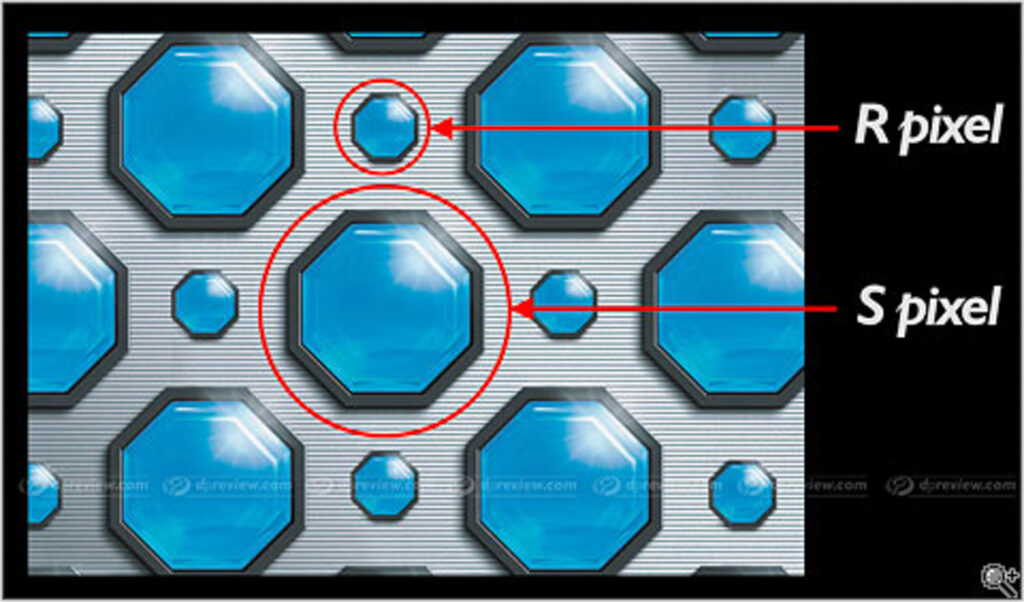
The S5 Pro was equipped with Fuji’s Super CCD SR II sensor, which used a dual-pixel architecture. The sensor consisted of two types of photodiodes—larger, more sensitive S-pixels and smaller, less sensitive R-pixels. This design allowed the camera to capture a broader dynamic range than most of its competitors, making it especially adept at preserving detail in both the highlights and shadows of an image.
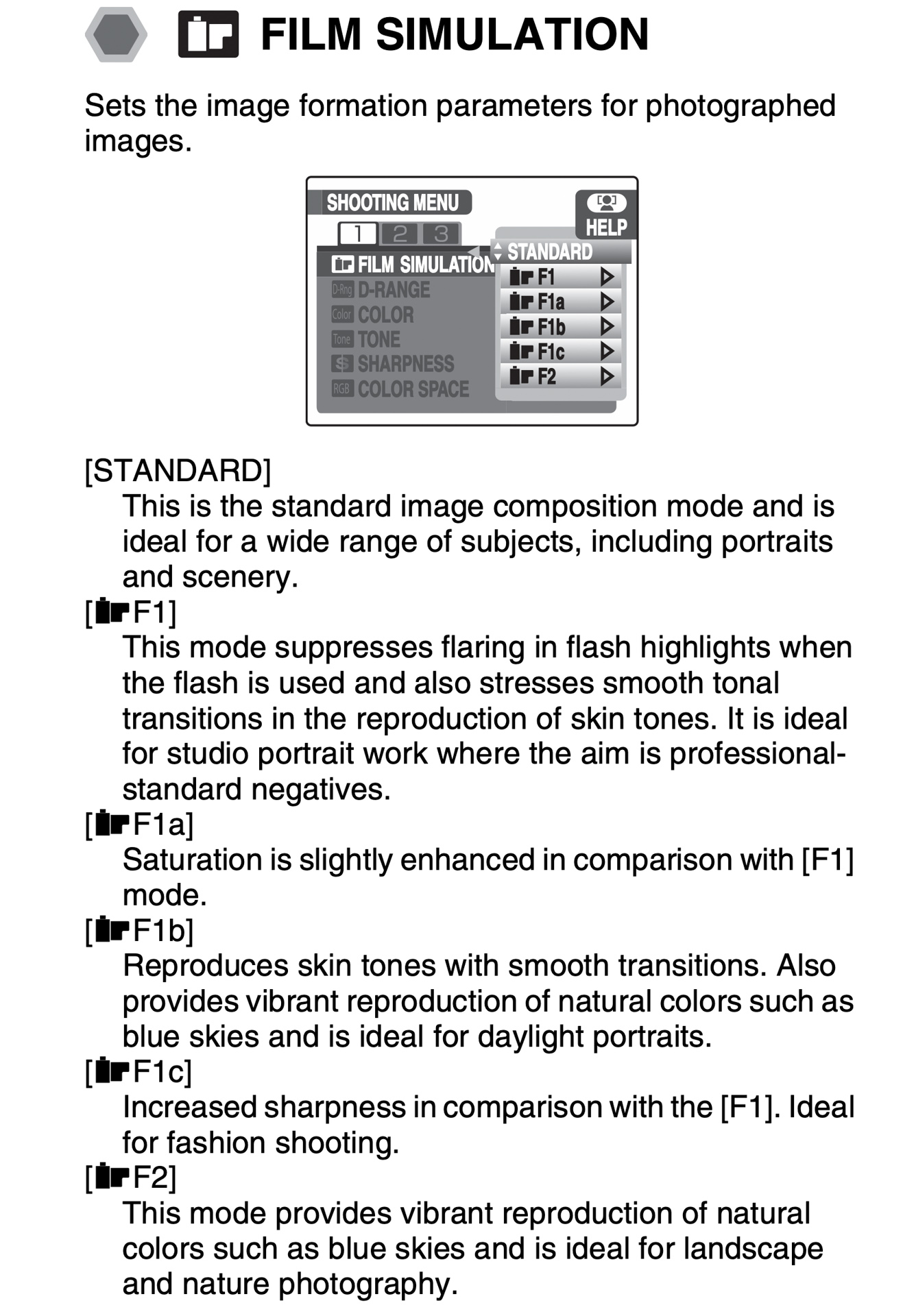
Secondly, Fuji had the smarts and experience to finesse the jpegs that came out of the sensor so they looked like scans of its successful film stocks (like 400H) that had nice skin tones and soft gradations—qualities that were obviously valued by portrait and wedding photographers. In the film simulations were set to anything other than standard, auto dynamic range kicks in and the camera decides whether and how much to use the extra R pixels. You can set dynamic range manually in Standard setting but the intention seems to be pretty squarely that you let Fuji work this out for you. Of course you also get other options like setting tone and colour saturation – that kind of thing, but the intention, again, seems to be that you work this out, set it and live with your JPEGs pretty much.
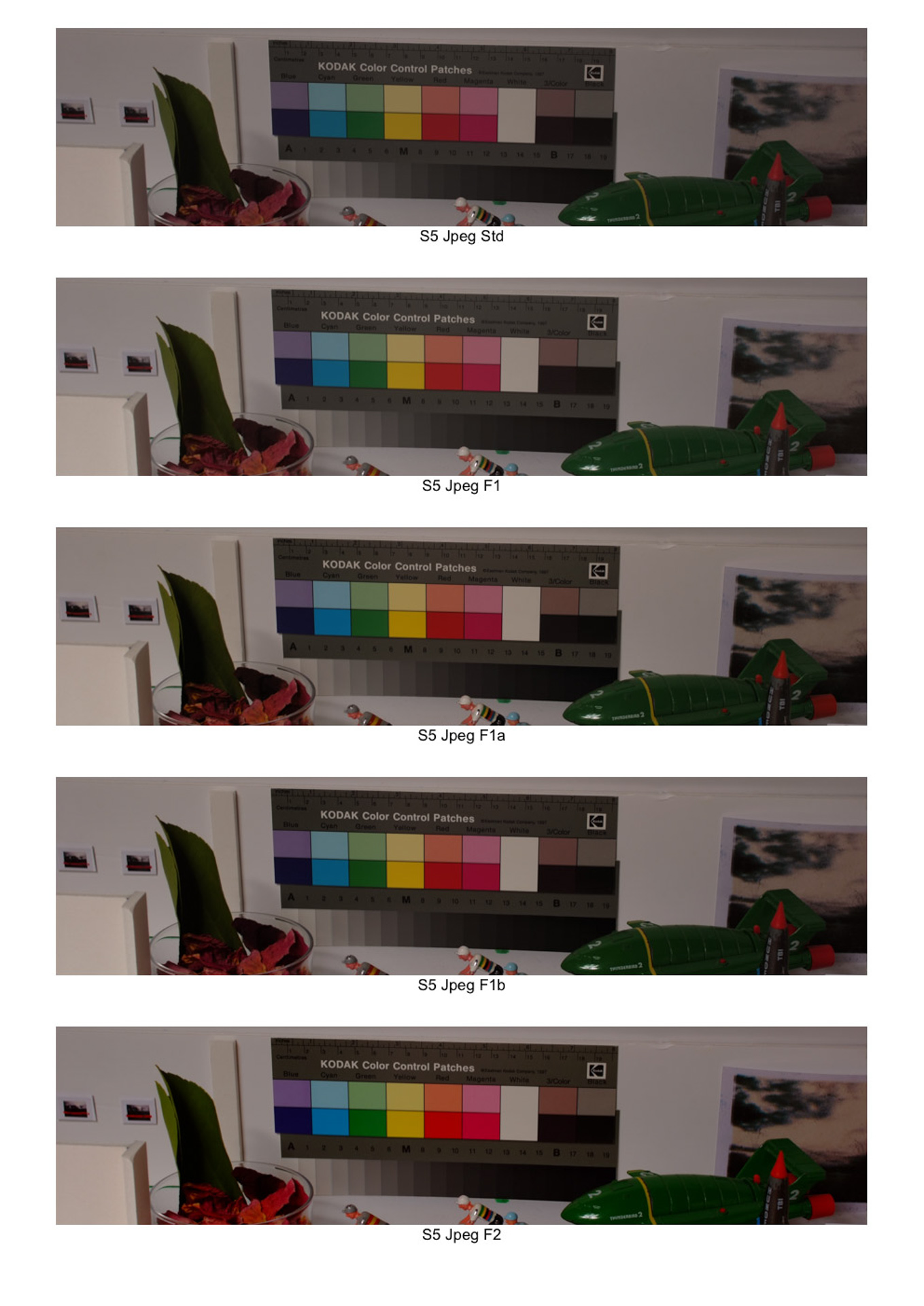
And, to state this yet again, the in-camera options gave photographers the flexibility to choose a “look” straight out of the camera, reducing the need for post-processing and allowing the camera to deliver ready-to-print jpegs directly suited for C-type printers of the time.
OK – I think that rests my case. I’m saying it’s film-like because it spits out jpegs that looks like scans of Fuji colour film stocks of the day.
And do I still care?
Well, not really. I did care a lot, obviously. I guess I had to go through all this crap to see if I was drinking the Internet Kool-Aid about CCD sensors and the “film-like” thing. You may remember that at the start I said I didn’t think I’d ever shoot the Fuji S5 Pro again. And here’s why. The D700 (for example) is a nicer camera in every respect. I like the sensor, and more I like the fact that the sensor is full frame and it plays with the lenses better than the Fuji’s crop sensor. I also like the X-Pro 3 better. Same story; the colours out of XP3 are better for me and the XP3 has ergonomics that allow me to do things that I could never do with the S5 Pro. I’ve tried the Olympus E-300 with its mythic Kodak CCD sensor and maybe I’ll write something about that but yes using that sensor, while it was nice, just reinforced that now I’ve experienced that sensor I can replicate it with my more modern cameras and not worry that I’m missing out. I’ve lost the FOMO if you like.


In a sentence – now that I’ve had the experience of this S5 sensor and its colours I can make any colour it can give me with a more modern sensor, and just pick the camera that’s got the ergonomics, lens choices and image quality that suits the work I’m doing.
And this is pretty much how I feel about any claim of a “Classic” look now that I’ve been through this process. As an aside I have to say it was a bit of an eye-opener seeing how easy it was to get really nice colours out of that Olympus E-300 with the Kodak CCD sensor but the downside is that it seems to get hot pixels when you shoot exposures longer than a couple of seconds and so the ease of the colour is diminished by the fact that you need to spend time cleaning crap off the file.
Let’s not forget either, that film was designed primarily to do a job rather than to have an aesthetic. I guess the aesthetic is a result of the manufacturers trying to reduce as much as they could the technical shortcomings and inaccuracies of colour film. So what we now get misty-eyed over is really just iterative pragmatic decisions made with the best available technology as the films were being developed.
Anyway there may well be more follow-up – I’m sure I’m not done with sensors, and looks, and all that kind of stuff, but at the moment I think this is a wrap. Thanks for reading!
Share this post:
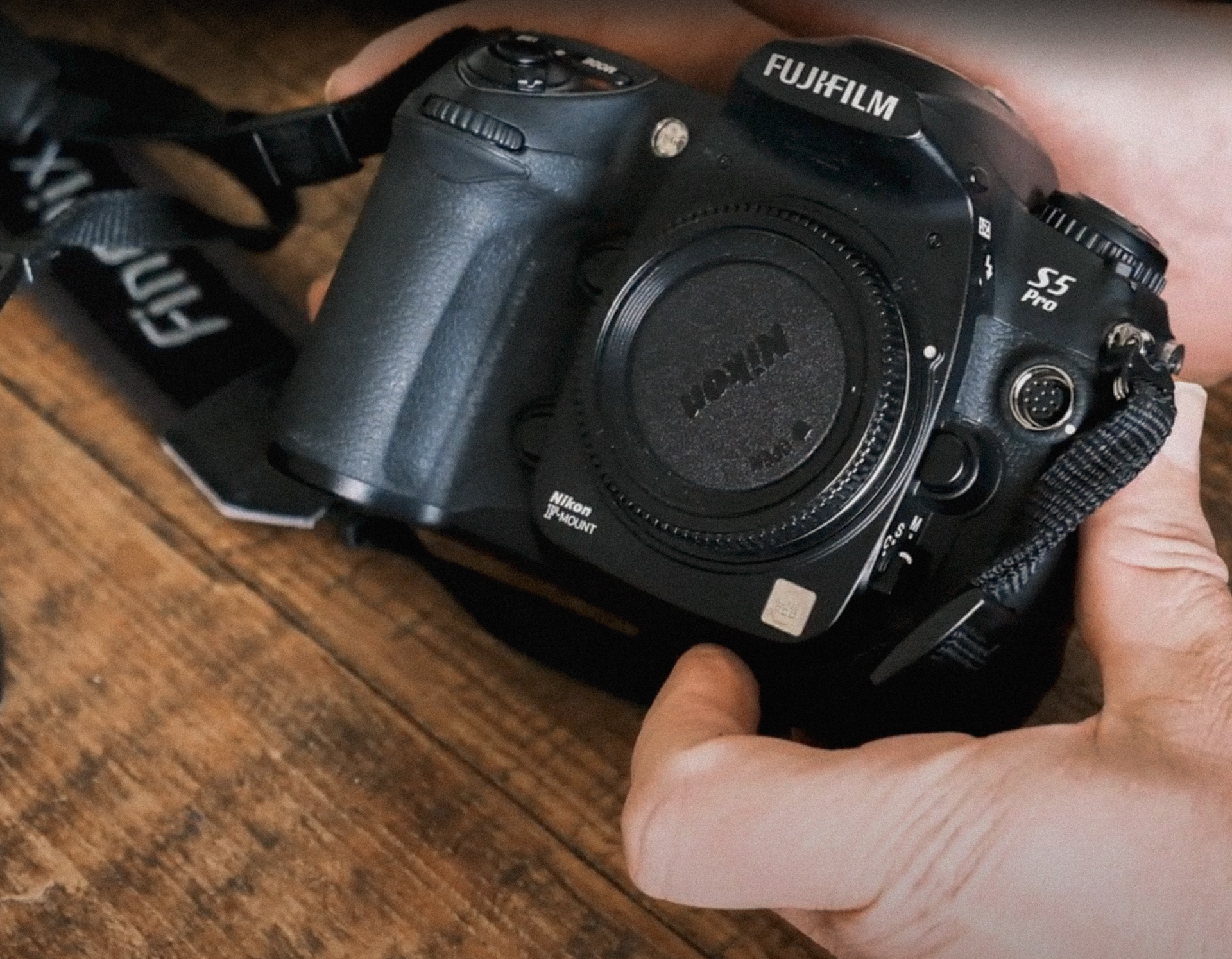
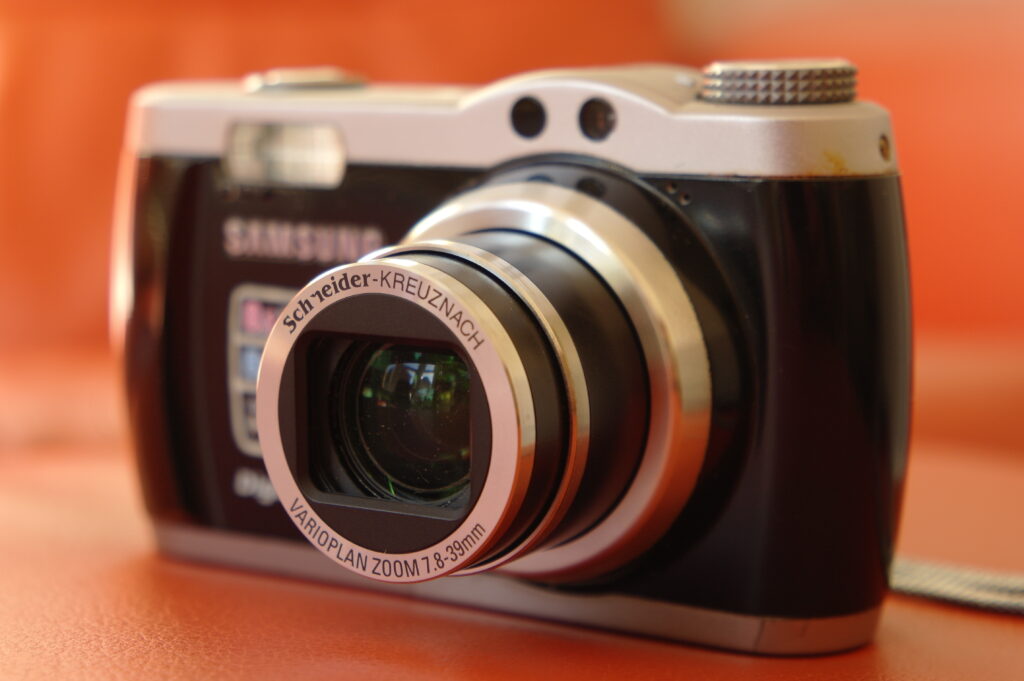
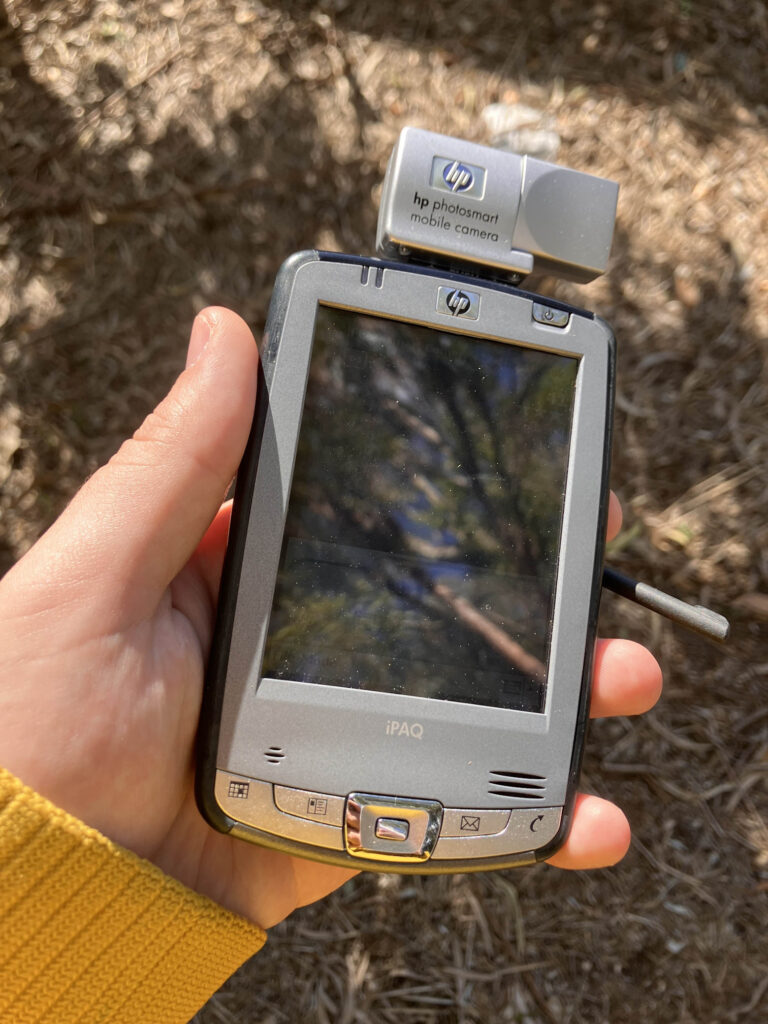
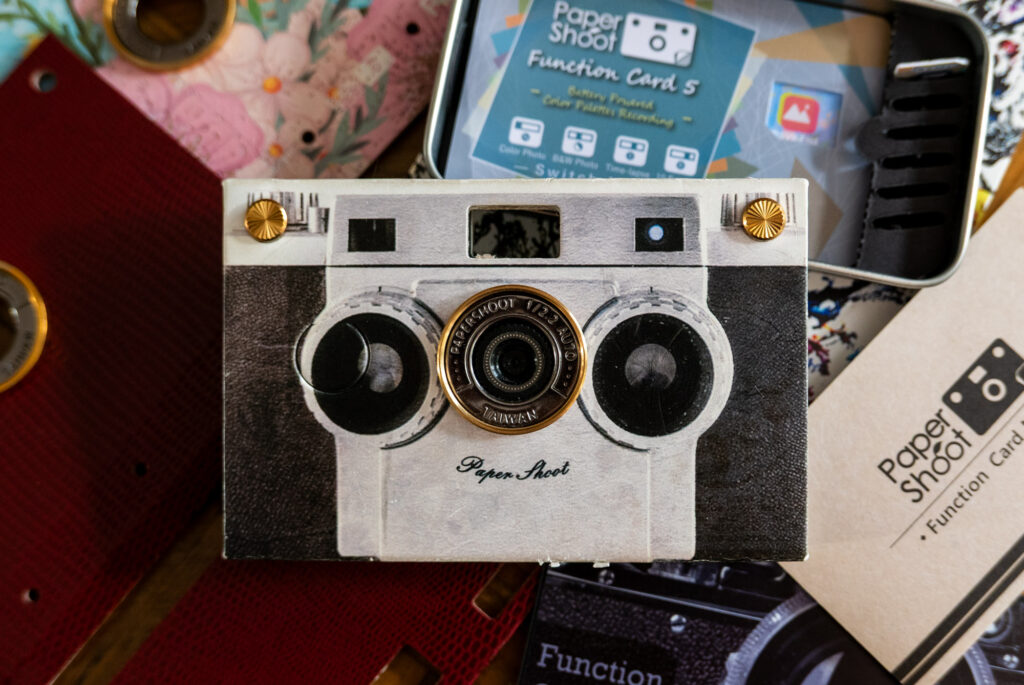
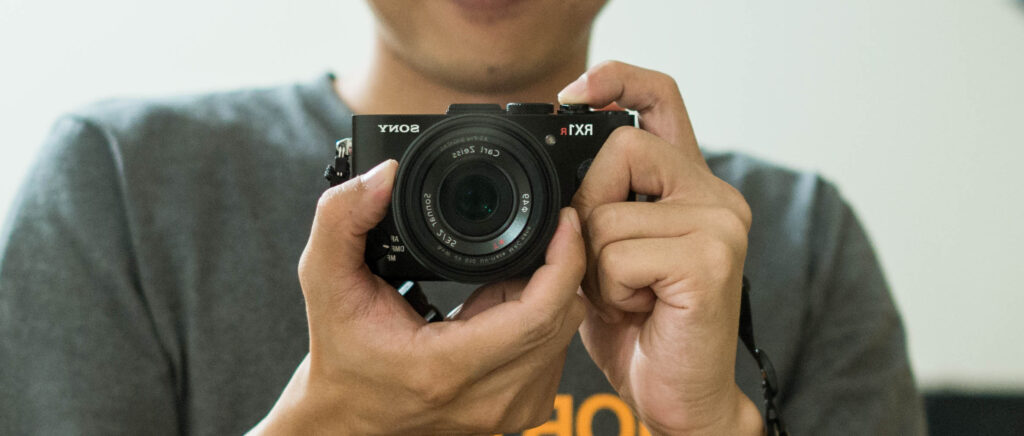




Comments
Geoff Chaplin on Fujifilm S5 Pro and What does “Film-Like” Even Mean?
Comment posted: 14/04/2025
Comment posted: 14/04/2025
moodywarlock on Fujifilm S5 Pro and What does “Film-Like” Even Mean?
Comment posted: 14/04/2025
Comment posted: 14/04/2025
Bill Brown on Fujifilm S5 Pro and What does “Film-Like” Even Mean?
Comment posted: 14/04/2025
Comment posted: 14/04/2025
Michael Keppler on Fujifilm S5 Pro and What does “Film-Like” Even Mean?
Comment posted: 14/04/2025
Apart from the specific properties of a particular film, analogue photography is not a look, but a process. Every single step of this process - from the choice of camera and lens to the choice of film and developer to the preparation of the print in the lab and again the choice of photographic paper, format, type of presentation - every single decision changes the result. Digitized, one and the same negative - at least without the corresponding effort - can deliver completely different results depending on the technology used; different scanners deliver different digital images.
However, you very aptly describe an essential characteristic of ‘film-like’ digital cameras: the dynamic range! This is probably what is valued as exposure latitude with film. Fuji succeeded, as you write, in not clipping the highlights as abruptly as other cameras, and the camera also delivered beautiful skin tones and very fine gradations of colour and brightness. I think it's these qualities of film that some digital cameras still can't match.
After shooting almost exclusively on film for the last two years, I recently managed to take a digital shot that gave me the impression of a film-like look. The secret: I had taken the picture with a digital Hasselblad which, thanks to its wide dynamic range, captured all the details perfectly in both highlights and shadows and which, thanks to its 16-bit colour depth, reproduces incredibly fine colour gradations. This is complemented by absolutely natural colour reproduction. Perhaps it is these particularly fine gradations in brightness and colour that remind us of analogue images.
Comment posted: 14/04/2025
Alexander Seidler on Fujifilm S5 Pro and What does “Film-Like” Even Mean?
Comment posted: 15/04/2025
Comment posted: 15/04/2025
Louis Sousa on Fujifilm S5 Pro and What does “Film-Like” Even Mean?
Comment posted: 15/04/2025
Comment posted: 15/04/2025
James Kezman on Fujifilm S5 Pro and What does “Film-Like” Even Mean?
Comment posted: 16/04/2025
Comment posted: 16/04/2025
Dave on Fujifilm S5 Pro and What does “Film-Like” Even Mean?
Comment posted: 16/04/2025
I tried the Fuji S5 - loved it, but wanted more flexibility in lens choice
I tried the Pentax 645D - a monster of a camera, with a Kodak CCD to die for... but ponderous and, again, limited in lens choice...
I tried several others, going through Panasonic (Lumix), Ricoh GR, nothing was quite what I was looking for as far as the final look....
I finally decided that I genuinely could make the filmic thing in my main camera bodies if I worked hard enough at the post-processing....
Comment posted: 16/04/2025
Gary Smith on Fujifilm S5 Pro and What does “Film-Like” Even Mean?
Comment posted: 16/04/2025
I suppose given that I have 8 film cameras now, I can get a film-like shot anytime I want. I can probably even turn a Fomopan 100 shot into a Tri-X shot in post.
What I have yet to do is successfully take my Toyo 45a out and get anything worth talking about. Of course, this is my fault, it has only ever exposed 2 sheets by my hand but I should have new chemistry this week and the weather is starting to get good, so look for a "% exposures from my Toyo 45a" coming to 35mmc before the end of the year...
Comment posted: 16/04/2025
Ibraar Hussain on Fujifilm S5 Pro and What does “Film-Like” Even Mean?
Comment posted: 18/04/2025
Comment posted: 18/04/2025
Comment posted: 18/04/2025
Comment posted: 18/04/2025
Comment posted: 18/04/2025
Dan Grove on Fujifilm S5 Pro and What does “Film-Like” Even Mean?
Comment posted: 21/04/2025
I don't think it's ever about a technical reproduction of film. I want the "artistic reproduction" of what I think film/memories look like and a practical way to reliably achieve this. Same kind of deal with modern computational photography in smartphones like I don't particularly mind it.
Imo it is basically impossible to get an indistinguishable film look from digital files like they are just too clean and at the extremes feel a lot more linear than digital. My min-max approach to getting a film-adjacent kind of look with digital is basically to squash/clip the shadows pretty aggressively in Levels. I get the impression that film transitions from shadow to black quite suddenly and JPEGs can often look quite muddy where they usually retain more shadow detail than preferred.
I love film colours but getting them to actually look legit and not like a pastiche is usually too much work lol so I leave colours as whatever the camera is set to. Colours from my iPhone pics are different to my X100F pics and my GRIIIx pics (although I have JPEG processing stuff set up in camera for all of them, Ricoh positive film is gorgeous). VSCO et al also has a lot to answer for with this stuff, I probably wouldn't even know Ektar or Agfa or Gold or whatever existed otherwise. Heathen!
I don't even mind if I've got half of the above wrong lol but yeah finding the specific look you want (including in the actual photos you take) is such a rewarding process. Fantastic read <3
Comment posted: 21/04/2025
Eagle Omomuro on Fujifilm S5 Pro and What does “Film-Like” Even Mean?
Comment posted: 09/06/2025
Comment posted: 09/06/2025
Gordon on Fujifilm S5 Pro and What does “Film-Like” Even Mean?
Comment posted: 13/06/2025
Comment posted: 13/06/2025
Rex Ko on Fujifilm S5 Pro and What does “Film-Like” Even Mean?
Comment posted: 09/08/2025
Comment posted: 09/08/2025